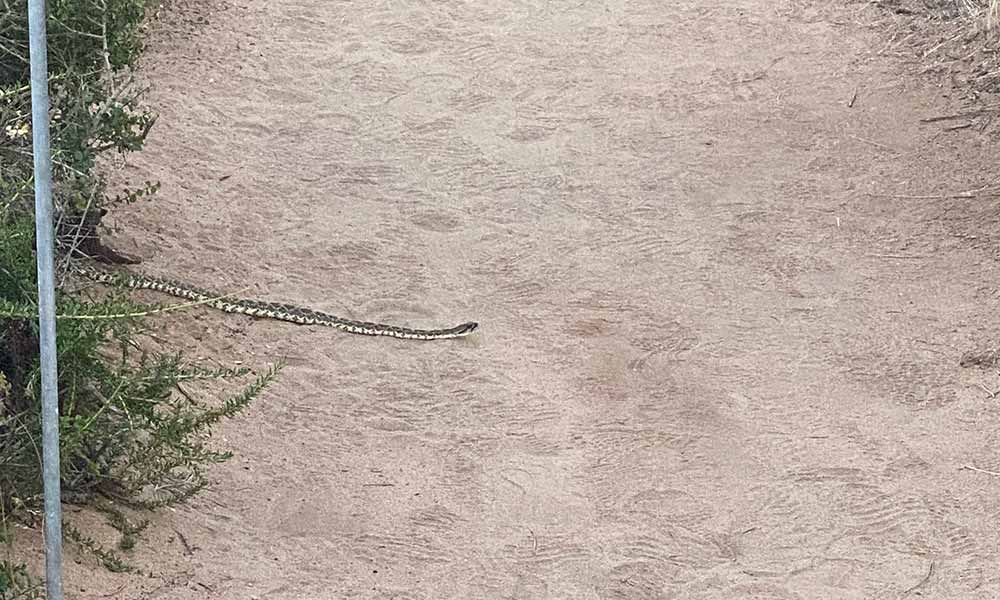There are many opportunities to move from trail to trail at Torrey Pines. Please consider the below-estimated distance and times as your actions could increase time-on-trail.
Torrey Pines State Main Extension Trails
| Hiking Trail | Distance | Trail Type | Difficulty |
| Guy Fleming Trail | .75 mi | Loop | Easy |
| Parry Grove Trail | .5 mi | Loop | Easy |
| High Point Trail | 100 yards | Out & Back | Easy |
| Razor Point Trail | 1.5 mi | Out & Back | Moderate |
| Beach Trail | 1.5 mi | Out & Back | Difficult |
| Broken Hill Trail | 2.6 or 2.8 mi | Out & Back | Difficult |
Torrey Pines State Reserve Extension Trails
These trails are not accessible from the South Parking Lot of Torrey Pines. These trails reside within the neighborhoods of Del Mar and are used more by local residents than visitors.
| Hiking Trail | Distance | Est. Hiking Time | Trail Type | Difficulty |
| Mar Scenic Trail | 1 mi | 30 min | Out & Back | Easy |
| Daughters of the American Revolution | 1.3 mi | 30 min | Out & Back | Easy |
| Margaret Fleming Nature Trail | 1.2 mi | 35 min | Out & Back | Easy |
| Red Ridge Loop Trail | .7 mi | 15 min | Loop | Easy |
Rattlesnakes At Torrey Pines
Yes, there are rattlesnakes at Torrey Pines State Reserve, specifically the Southern Pacific Rattlesnake. If you don’t know what a rattlesnake looks like you, take a look below. You learn more about the types of rattlesnakes in North America here.

There are up to 18 species of snakes reported by Torrey Pines Nature Reserve that live in the reserve but chances are you won’t see any and if you do it will be one of the below species.
Types of Snakes You May Encounter at Torrey Pines
If you are lucky enough to observe wildlife in its natural habitat, it is wise to keep your distance. If you come across a snake give it distance so as to not put it on the defense and give it time to move. It will most likely disappear into the brush without incident. That is exactly what happened when we encountered the rattlesnake in the above picture. We waited about 60 seconds until it u-turned around and went into the bush that led down a hill.
| Snake Type | Venomous | Note |
| Southern Pacific Rattlesnake | Yes | You can usually spot a rattlesnake by its considerably larger triangular-shaped head as compared to its body. They have brown/black blotches separated by yellow borders. They typically grow up to 3 feet in length. |
| Gopher Snakes | No | Gopher snakes are not venomous but can still deliver a painful bite. They try to pass themselves off as rattlesnakes when threatened by coiling, shaking its tail in the brush to mimic the rattle of a rattlesnake, and making a hissing sound. They can grow up to 4 feet in length. Their color is similar to rattlesnakes. |
| Kingsnakes | No | Kingsnakes have black bodies with yellow or white bands. They grow up to 3 feet in length. |
| Striped Racers | No | Striped racers is a thin snake that grows up to 4 feet in length. It has a dark body with thing yellow and white stripes running from its head to its tail. They look like a garter snake. |







